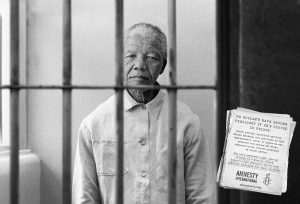Despite being one of the most respected leaders in the world today, Nelson Mandela’s story was not that great in the beginning. He spent 27 years behind bars after being convicted of sabotage for his role in planning acts of violence against the government. However, during his time in prison, he continued to fight for an end to apartheid. He helped lead South Africa through a peaceful transition to democracy when he was finally released. Today, we remember him as a symbol of peace and justice.
Timeline of Imprisonment
Mandela’s first imprisonment was in 1952. Along with Walter Sisulu and 18 other political activists, he was sentenced to nine months of hard labor under the Suppression of Communism Act.
He was arrested again in 1956 for treason, but the charges were eventually dropped. After becoming the face of the resistance movement, he went into hiding for years before being arrested for the third time on August 5, 1962. Two months later, on October 25, he was sentenced to five years on Robben Island, a maximum security prison off the coast of Cape Town. The conditions on Robben Island were brutal, but Mandela persevered. He was only allowed one visitor and one letter every six months.
During the Rivonia Trial on April 20, 1964, he made the speech from the dock that became famous around the world:
“I have fought against white domination, and I have fought against black domination. I have cherished the ideal of a democratic and free society in which all persons live together in harmony and with equal opportunities. It is an ideal which I hope to live for and to see realized. But my lord, if it needs be, it is an ideal for which I am prepared to die.”
Mandela and the other defendants, except for Rusty Bernstein, were found guilty and sentenced to life in prison. He spent the next years of his life imprisoned and placed in solitary confinement in a small cell just over seven feet wide and seven feet tall. He was allowed one hour of exercise per day; otherwise, he was confined to his cell.
When his eldest son died in 1969, Mandela was not allowed to attend the funeral. In March 1982, he was transferred to Pollsmoor Prison in Cape Town, where he remained until 1990. He became increasingly popular inside and outside of prison, with people calling for his release.
Release and Legacy
On February 11, 1990, Nelson Mandela was released after 27 years of incarceration. He immediately resumed his fight against apartheid and helped lead South Africa through a peaceful transition to democracy. In 1994, he became the country’s first black president.
Today, Nelson Mandela is respected around the world as a symbol of peace and justice. His story is an inspiring example of how one person can make a significant difference. He passed away in 2013 at the age of 95, but his legacy continues through the work of the Nelson Mandela Foundation and other organizations that carry on his vision for a better world.
